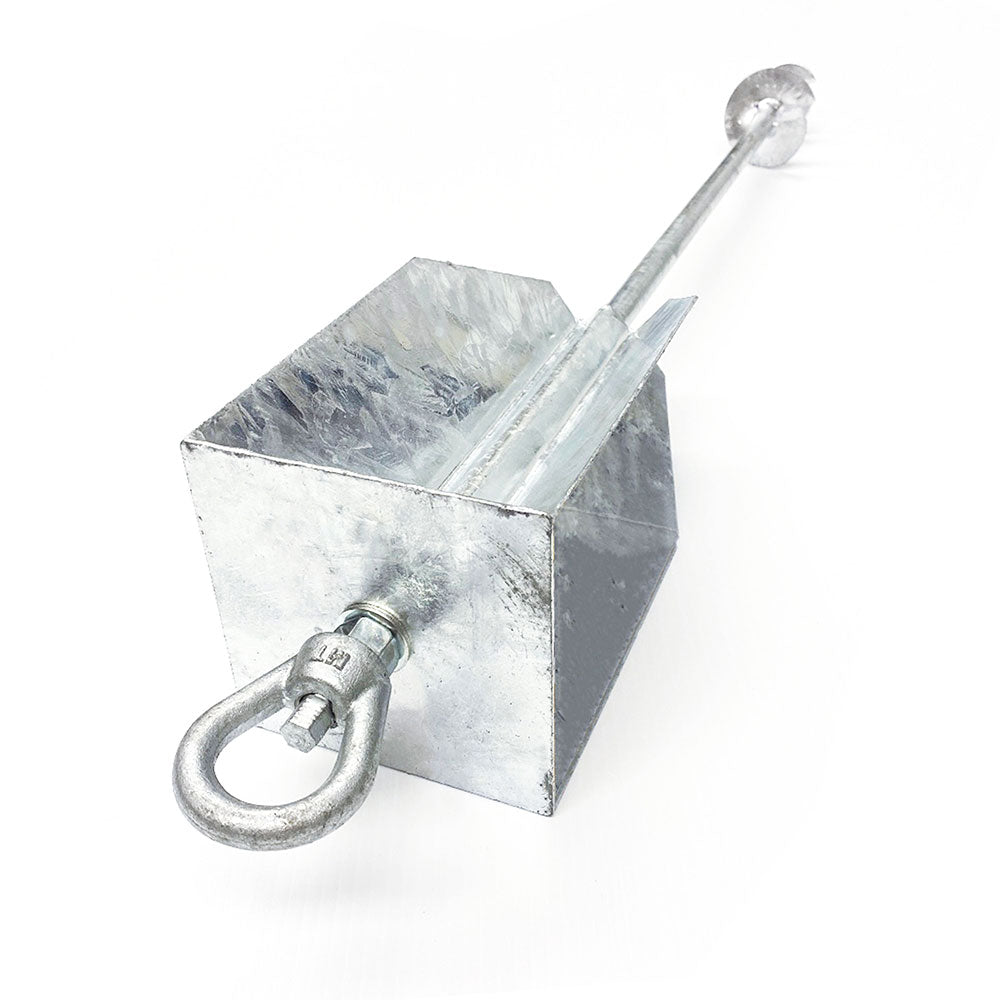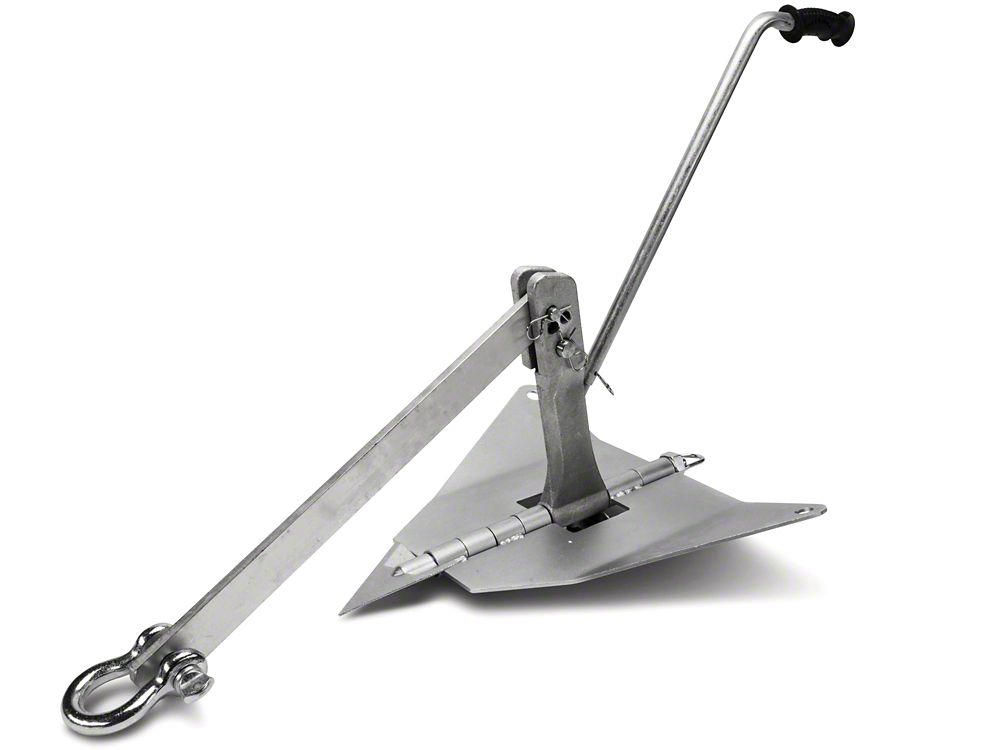Comparing Various Ground Anchor Models to Find the Perfect Fit for Your Needs
Comparing Various Ground Anchor Models to Find the Perfect Fit for Your Needs
Blog Article
Explore the Various Sorts Of Ground Anchor for Your Following Project
When starting a building or landscape design job, understanding the various sorts of ground anchors available is essential to making sure both stability and resilience (Ground Anchor). From auger anchors, which master varied soil problems, to risk anchors made for short-lived setups, the choices are various. Furthermore, concrete and screw anchors existing distinct benefits in specific circumstances, while deadman supports are tailored for applications calling for resistance to lateral pressures. The option of an ideal anchor kind can considerably influence the general success of your project, triggering more exploration into their respective advantages and applications.

Auger Anchors
Auger supports are a preferred option in numerous construction and landscape design tasks due to their one-of-a-kind layout and efficient securing capacities. These supports are composed of a helical screw-like shaft that is driven right into the ground, permitting for a steady and secure hold. The spiral design facilitates simple setup and optimizes resistance versus lateral pressures, making auger anchors particularly effective in applications such as fencing, momentary frameworks, and erosion control.
The setup procedure of auger anchors is relatively straightforward. They can be by hand or mechanically mounted, relying on the size and called for depth. This adaptability enables for their usage in varied soil problems, from sandy to clayey surfaces. In addition, auger supports can be conveniently removed and recycled, which contributes to their cost-effectiveness and sustainability.
One of the considerable advantages of auger supports is their capability to distribute tons evenly throughout the surrounding dirt, lowering the danger of soil disturbance and decreasing ecological effect. Additionally, they are much less susceptible to heaving or loosening up in time contrasted to conventional anchoring techniques. Auger anchors are a superb choice for jobs calling for reputable and long lasting anchoring options.

Risk Anchors
When it comes to protecting frameworks in a variety of exterior applications, stake supports supply a trusted and uncomplicated service. These anchors are commonly constructed from resilient materials such as steel or light weight aluminum, made to withstand ecological stresses while giving optimal stability. Their basic style permits quick installation, making them a suitable option for permanent or short-lived anchoring demands.
Stake supports are specifically beneficial in securing tents, canopies, and various other lightweight structures against wind and climate. They work by being driven into the ground at an angle, creating a strong hold that resists pull-out pressures - Ground Anchor. The efficiency of risk supports depends on a number of factors, consisting of dirt type, dampness web content, and the angle of installment
For added protection, many stake anchors include add-on factors for ropes or bands, permitting stress changes as needed. In applications such as landscape design or construction, they can properly stabilize devices or frameworks on unequal surface. In general, risk anchors give a affordable and functional remedy for protecting numerous exterior setups, making them a recommended selection for service providers and DIY fanatics alike.
Concrete Anchors
Concrete supports give a robust solution for safeguarding structures to concrete surfaces, guaranteeing stability and security in different applications. These anchors are important for tasks varying from residential building and constructions to large-scale industrial installations. They come in different types, including development supports, sticky anchors, and undercut supports, each developed for details load needs and ecological conditions.
Growth anchors count on mechanical mechanisms to hold the concrete when click for info mounted. They are suitable for medium to sturdy applications. Adhesive anchors utilize high-strength epoxy or resin to bond the support to the concrete, providing exceptional load-bearing capacities, specifically in cracked concrete situations. Undercut supports create a special form within the concrete, offering remarkable holding power, specifically in applications where tensile lots prevail.
When executed properly, concrete supports significantly improve the architectural stability of various tasks, making them essential in contemporary construction methods. Understanding the particular demands of your task will certainly assist in picking the best type of concrete support for the task.
Screw Anchors

Screw supports are a versatile attaching remedy that can be effectively used in a selection of applications where conventional concrete anchors might not suffice. These anchors consist of a helical style that enables them to be conveniently driven into the ground, making them optimal for usage in dirt and various other substrates. Their unique structure provides superb holding power and resistance to pull-out pressures, making them ideal for numerous tasks, from landscape design to architectural assistance.
One of the main benefits of screw anchors is their ease of setup. They call for minimal devices and can often be mounted without the need for excavation, which saves both time and labor expenses. In addition, screw anchors can be gotten rid of and recycled, Home Page supplying a sustainable solution for short-lived applications.
Screw anchors are particularly beneficial in locations where dirt here are the findings conditions are testing, such as sandy or loosened soils. Their capability to be mounted at differing midsts permits customization based upon particular task needs. In general, screw supports give a effective and dependable securing approach, making them an outstanding choice for professionals and engineers seeking reliable remedies for their jobs.
Deadman Anchors
Deadman supports function as a robust solution for supporting frameworks in difficult problems, specifically where conventional anchoring techniques might fail. These anchors contain big, hefty things buried underground, which create resistance versus side forces. The design usually entails a straight part, such as a block of concrete or a steel plate, buried in the soil, to which straps or wires are attached.
The effectiveness of deadman anchors hinges on their capacity to distribute loads over a bigger area, minimizing the threat of failing in unstable dirt conditions. They are particularly beneficial in applications such as retaining wall surfaces, temporary structures, and incline stablizing, where dirt movement can jeopardize the stability of the framework.
Installation of deadman supports requires cautious planning to guarantee they are placed at the proper depth and positioning, optimizing their load-bearing ability. While they might call for more labor and product than light-weight anchors, their dependability in damaging problems makes them important for long-term jobs. Furthermore, deadman supports are functional and can be adjusted to various applications, making them a best choice for engineers facing special obstacles in their tasks.
Conclusion
Auger anchors excel in varied dirt conditions, while stake anchors fit momentary applications. For concrete surfaces, growth and glue supports offer trustworthy choices, and screw supports supply versatility in tough terrains.
Additionally, concrete and screw anchors existing special advantages in certain scenarios, while deadman supports are tailored for applications calling for resistance to side pressures - Ground Anchor.Auger anchors are a prominent option in various construction and landscaping jobs due to their one-of-a-kind layout and reliable anchoring abilities. They come in different kinds, including development supports, glue anchors, and undercut supports, each made for certain tons demands and ecological problems
Adhesive supports use high-strength epoxy or material to bond the support to the concrete, offering exceptional load-bearing capacities, specifically in broken concrete scenarios. On the whole, screw anchors supply a effective and dependable securing technique, making them an outstanding choice for professionals and engineers looking for effective services for their jobs.
Report this page